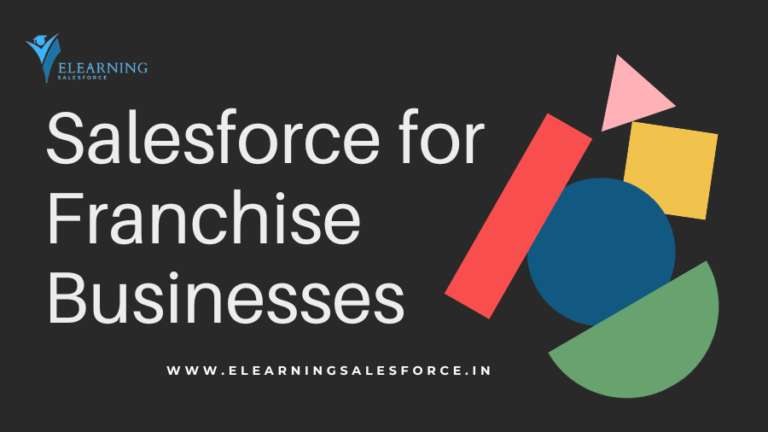Craft a robust data foundation for your Salesforce applications! Dive deep into advanced Salesforce Data Modeling techniques for developers, including relationships, data governance, normalization, and more. Take your Salesforce expertise to the next level…
Feeling overwhelmed by complex data structures and sluggish Salesforce applications?** As a developer, you understand the power of well-crafted data models – the foundation upon which efficient, scalable, and performant Salesforce applications are built. But when it comes to advanced data modeling techniques, the path can seem daunting. Fear not, fellow developer! This comprehensive guide is your key to unlocking the full potential of data modeling in the Salesforce ecosystem. Dive deep into relationships, data governance, normalization, and beyond, and watch your applications soar to new heights. Get ready to transform data chaos into a symphony of structure and efficiency – your journey to mastering advanced Salesforce data modeling techniques begins now!
Understanding Data Modeling Fundamentals:
Before diving into the intricacies of advanced techniques, let’s revisit the fundamental building blocks of data modeling in the context of Salesforce development. Imagine a magnificent building – its strength and functionality rely heavily on a solid foundation. Similarly, well-structured Salesforce applications depend on a robust data model, ensuring efficient data organization, retrieval, and manipulation.
A. Core Concepts:
- At its core, data modeling is the process of defining and organizing data in a way that optimizes its usefulness and integrity. It’s like creating a blueprint for your information, specifying how different pieces of data relate to each other and how they should be structured. In Salesforce, this translates to entities (objects) that represent real-world things like “Contacts,” “Accounts,” and “Opportunities.” Each entity is further composed of attributes (fields) that capture specific details about those entities, such as “Name,” “Email,” and “Amount.”
- Relationships act as the glue that binds these entities together. Imagine the connections between different departments in a company – the sales team interacts with the customer service team, and both collaborate with the marketing team. Similarly, in Salesforce, entities can establish various relationships, like one-to-one (e.g., a Contact can have one Account), one-to-many (e.g., an Account can have many Contacts), or many-to-many (e.g., a Contact can attend many Events, and an Event can have many Contacts attending). Understanding these fundamental concepts lays the groundwork for comprehending and utilizing advanced data modeling techniques effectively.
By grasping these foundational aspects, you’ll be well-equipped to embark on your journey towards mastering advanced data modeling practices in the Salesforce ecosystem. Remember, a solid understanding of the basics empowers you to confidently navigate the complexities of more intricate techniques.
Advanced Data Modeling Techniques:
Now that you’ve established a strong foundation in the fundamentals, let’s delve into the powerhouse features that elevate your data modeling skills in the Salesforce realm. These techniques empower you to optimize data organization, enhance performance, and ensure data integrity.
A. Establishing Effective Relationships:
- Beyond the Basics: While you’re familiar with the core relationship types (one-to-one, one-to-many, many-to-many), advanced data modeling delves deeper. Consider relationship cardinality, which defines the minimum and maximum number of times an entity can participate in a relationship. Understanding cardinality nuances is crucial to avoid data inconsistencies and optimize queries. For example, an Account can have zero or many Contacts (0..N), but a Contact must be linked to exactly one Account (1..1), ensuring data integrity within your Salesforce instance.
- Optimizing Relationships for Performance: Remember, the way you structure relationships directly impacts data retrieval efficiency. Minimize the use of many-to-many relationships, as they often require complex queries and can hinder performance. Consider introducing junction objects to bridge these relationships efficiently, like creating a “Campaign Member” object to link “Campaigns” and “Contacts” instead of a direct many-to-many connection.
B. Implementing Data Governance Strategies:
- Data Governance: Maintaining Order in the Chaos: As your Salesforce instance grows, maintaining data quality and consistency becomes paramount. This is where data governance comes into play. It’s a framework for establishing rules, processes, and accountability to ensure data accuracy, security, and accessibility. By incorporating data governance principles into your data model, you can define ownership of specific data elements, implement access controls to safeguard sensitive information, and establish data quality monitoring practices to identify and rectify any inconsistencies.
Putting Theory into Practice:
Understanding advanced data modeling techniques is essential, but true mastery lies in applying them effectively in real-world scenarios. This section bridges the gap between theory and practice, providing you with practical guidance and illustrative examples to solidify your understanding.
A. Embracing Real-World Applications:
- Scenarios Come Alive: Imagine you’re building a custom Salesforce application for a retail company. One key requirement is to track customer purchase history and preferences. Here, you can leverage your knowledge of one-to-many relationships. A “Customer” object can have a one-to-many relationship with an “Order” object, allowing you to efficiently store and retrieve individual purchase details for each customer.
- Thinking Beyond the Basics: Now, consider adding a loyalty program to the scenario. This introduces a many-to-many relationship between “Customers” and “Rewards.” However, directly implementing this can lead to complex queries and potential performance issues. To optimize, you can introduce a junction object called “CustomerReward” that acts as a bridge, establishing efficient many-to-many connectivity while maintaining data integrity and performance.
B. Experimentation is Key:
- Hands-on Learning: While understanding the concepts is crucial, there’s no substitute for hands-on experience. Set up a Salesforce developer environment and start experimenting with these techniques. Build sample data models, create relationships, and practice applying data governance principles. This active engagement solidifies your grasp of the concepts and empowers you to approach real-world projects with confidence.
- Seek Guidance and Inspiration: Don’t hesitate to leverage the vast Salesforce community. Numerous online forums, groups, and resources offer valuable insights and practical examples from experienced developers. Use these platforms to ask questions, share your experiences, and learn from the collective knowledge base of the community.
Conclusion:
Unleashing the Power of Advanced Data Modeling in Salesforce
Throughout this comprehensive guide, you’ve embarked on a journey to unlock the true potential of data modeling in the Salesforce ecosystem. We began by establishing a solid foundation in the core concepts, ensuring a clear understanding of entities, attributes, and relationships. From there, we ventured into the realm of advanced techniques, empowering you to optimize relationships, implement data governance strategies, and leverage the power of normalization and advanced data types.
Remember, mastering these techniques unlocks a treasure trove of benefits: enhanced data organization, improved performance, and unwavering data integrity. This translates to efficient, scalable, and user-friendly Salesforce applications that empower businesses to thrive in today’s data-driven world.
So, take action! Set up your developer environment, experiment with these techniques, and actively seek guidance from the vibrant Salesforce community. Embrace the continuous learning mindset, and watch your data modeling skills flourish. As you confidently navigate the world of advanced data modeling, remember, the power to transform data chaos into a symphony of structure and efficiency lies within your grasp.
FAQ
- What is data modeling in Salesforce?
- Data modeling in Salesforce is the process of defining and organizing data in a way that optimizes its usefulness and integrity for building efficient applications. It involves creating entities (objects), attributes (fields), and relationships between them.
- What are the different types of relationships in Salesforce?
- Salesforce supports three primary relationship types:
- One-to-one: A single instance of one entity can be associated with at most one instance of another entity.
- One-to-many: A single instance of one entity can be associated with multiple instances of another entity.
- Many-to-many: Multiple instances of one entity can be associated with multiple instances of another entity (typically implemented using “junction objects”).
- Salesforce supports three primary relationship types:
- What are the benefits of using data modeling in Salesforce?
- Well-designed data models provide several benefits:
- Efficiency: Data is organized and structured logically, making it easier to retrieve and manipulate.
- Scalability: The model can adapt and grow as your business and data needs evolve.
- Maintainability: Easier to understand, maintain, and modify as necessary.
- Data integrity: Relationships and constraints help ensure data accuracy and consistency.
- Performance optimization: Properly structured data models can improve query performance.
- Well-designed data models provide several benefits:
you may be interested in this blog here
Top SAP MM Interview Questions & Answers for 3 Years Experienced…




